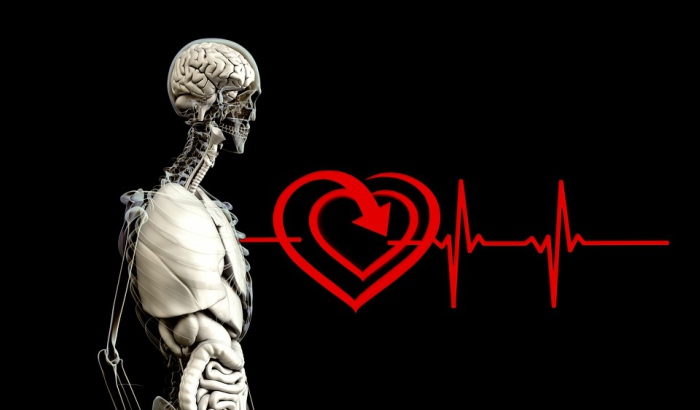Training tools have matured to a point that makes training methods more scientific. Universal terminologies like zone-training, power meter training (Watts), heart rate (HR), or “perceived rate of exertion” (RPE or PE) are used by many training programs. While all of these approaches have great advantages, they can become confusing, overwhelming, and discouraging if not understood or used properly. This article provides an overview of the “zone training” terminology used by many athletes and coaches.
Your car’s dashboard displays various gauges including a speedometer, tachometer, oil pressure, etc…All of these instruments provide the driver with information to make better and informed decision about speed, mileage, distance. Think of the heart rate monitor, power meter, and other like tools in the same concept but as they apply to you. Zone training is Heart Rate Training.
What is meant by zone training? The easiest and least expensive way to good heath is through proper nutrition and good exercise. Within the boundaries of “good exercise”, we all have different goals ranging from weight management to qualifying for Kona.
Training by zones allows you to manage the desired outcome. Each zone has a specific effect on your body and to an extent allows you to predict the outcome. If you drive faster than normal, you can expect to burn through your gas tank faster than normal. You know because your gas gauge reflects your action; cause and effect.
At 55 miles per hours, your car gets a certain number of miles per gallon. At 85, it gets less because your car is working harder. The two speeds could be loosely described as being in two different “zones.”
If you run too fast, you’ll run out of energy too soon. But if you knew the effect of running in each zone, you could budget energy levels and have better influence on your running results. You will be better informed and make appropriate adjustments to pace. Let’s begin to understand your personal zones by first calculating your Maximum Heart Rate (MHR).
MHR = 220 – Your Age (Example for a 40 year old person: 220 – 40 = 180)
Zone 1 (Z1)
Zone 1 is also known as Active Recovery. It is the range from 50% to 60% of MHR. In our example, we would calculate zone 1 as follows:
Zone 1 Lower Limit = 50% x 180 = 90 Beats per Minute
Zone 1 Upper Limit = 60% x 180 = 108 Beats per Minute
General Description
The benefits to Zone 1 are primarily for recovery, retuning from injury, or returning from prolonged absence from exercise. For weight management, this is a great place to spend as much time as possible. Lengthy workouts in this zone have proved to burn an estimated ratio of 75% fat and 25% carbohydrate.
This level provides less training affects than the other zones. During race season, most coaches will refrain from prescribing specific amount of time in this zone. They may schedule it after or before races to recover physically or prepare mentally. During the off season, it’s a great way to improve blood flow.
The body’s preferred source of fuel in this zone is fat (approximately 75%) and carbohydrates (25%) in the form of glycogen. However, the transition from burning resident fuel to burning fat begins after a prolonged period on time in this zone; typically 45 – 60 minutes.
The more in shape you are, the quicker you will begin to burn fat in this zone. Fat burning beyond this point increases exponentially as you remain in this zone, leveling off at about 90 minutes. Drink plenty of fluids before and during the workouts of 90 minutes or more.
Zone 2 (Z2)
Zone 2 is also known as the Endurance zone. It is a range from 60% – 70% of MHR. In our example, we would calculate this zone as follows:
Zone 2 Lower Limit = 60% x 180 = 108 Beats per Minute
Zone 2 Upper Limit = 70% x 180 = 126 Beats per Minute
General Description
This is the basic endurance-building zone, should be at a conversational pace, and still feel pretty easy. This is what’s usually described as LSD (“long slow distance”) training. A significant amount of your off season or base training schedule should be in this zone. This zone is also beneficial during racing season for recovery workouts. It provides the physiological foundation for more intense training including:
– Improves heart’s ability to pump blood
– It increases sum total of small blood vessels in your extremities
– Increases enzymes in your muscles responsible for oxygen metabolism
– Increases cardio capacity of muscles, tendons, and ligaments
The benefits of Zone 2 begin after about 45 minutes. Doing a half-hour in the morning and the other half-hour in the evening in zone 2 will not provide the stress and adaptation to endurance results we’re looking for nor will it help you burn as much fat as one 60-90 minute workout.
Zone 2 is an excellent way to improve basic fitness but requires, as does zone 1, prolonged workouts with the benefits coming in the later portion of the workout. While it does not directly contribute to strength, power, or performance, it does help our bodies prepare for the more demanding workouts in zones 3 & 4. This is why athletes spend a considerable amount of time in this zone during their off season.
Zone 2 can be perceived as building the fitness foundation in order to perform at more intense efforts. Banking time in this zone during the off season or during your base training will provide significant benefits during event specific training. Failed attempts to improve performance in zones 4 and 5 are often attributed to a lack of adequate time zone 2 training.
Typically, athletes will sacrifice Zone 2 workouts/time before Zone 4/5 whenever time runs short. If you do, you’re guaranteed to burn out or over train. Don’t worry; even the pros spend most of their time here. Of course, a pro cyclist (for example) goes 25 mph in Z2 where the rest of us do closer to 16-20 at the same HR; it’s a function of training.
Body’s Primary source of fuel In zone 2, body fat and carbohydrates are equally used as fuel sources but only after about 45 minutes. Most athletes should do these types of workouts 4-6 days per week during the off-season and 2-3 during event training.
Zone 3 (Z3)
Zone 3 is also known as the Tempo zone. Workouts are usually referred to as Tempo rides or runs. You can still carry on a conversation but the sentences get shorter and the level of conversation of a group decreases noticeably. It is a range from 70% – 80% of MHR. In our example, we would calculate as follows:
Zone 3 Lower Limit = 70% x 180 = 126 Beats per Minute Zone 3 Upper Limit = 80% x 180 = 144 Beats per Minute
General Description
Zones 1-3 are completely aerobic (or with oxygen) meaning muscles are receiving oxygen during the workout. Zone 3 continues to be a pace that you can handle for several hours.
This is the preferred zone for endurance events. When unfit the body burns carbohydrate as fuel. Some of these carbohydrates are stored as glycogen in muscles. When fit, the body will burn fat as fuel increasing endurance. This zone allows your body to adapt to a faster pace. You can raise your speed without building up lactate acid.
Training in this zone will develop your cardiovascular system. In this zone, the body’s ability to transport oxygen to working muscles and remove carbon dioxide from working muscles increases.
Body’s Primary source of fuel The primary energy sources in Zone 3 remain fats and carbohydrates but in different percentages.
In zone 3, the body seeks carbohydrates primarily (75%), and fats (25%). Keep in mind the body has virtually endless stores of fat cells but not so much glycogen stores which are now providing adequate levels of energy. Many coaches prescribe back-to-back days of Z3 training depending on the athlete’s ability to recover. Refueling during long workout is key to zone 3 training.
Zone 4 (Z4)
Zone 4 is commonly referred to as lactate threshold (LT) or anaerobic threshold (AT). It is a range from 80% – 90% of MHR.
MHR. In our example, we would calculate as follows: Zone 4 Lower Limit = 80% x 180 = 144 Beats per Minute Zone 4 Upper Limit = 90% x 180 = 162 Beats per Minute
General Description
Depending on your fitness level, Zones 4 begins to enter into anaerobic (or without oxygen) area. In other words, your body cannot meet the demand for oxygen requested by working muscles. Although there’s a range, when you do Z4 workouts, you want to be very close to your actual threshold; around 85%. As you get stronger, faster, and fitter, you’ll raise performance at the same threshold.
Training in this zone will develop your lactic acid system. In this zone, your individual anaerobic threshold (AT) is found – sometimes referred to the point of deflection (POD). During these heart rates, the amount of fat being utilized as the main source of energy is greatly reduced and glycogen stored in the muscle is the primary source of energy.
One of the by-products of burning this glycogen is lactic acid. There is a point at which the body can no longer remove the lactic acid from the working muscles quickly enough. This is your anaerobic threshold (AT). Through the correct training, it is possible to delay the AT by being able to increase your ability to deal with the lactic acid for a longer period of time or by pushing the AT higher.
Body’s Primary source of fuel The primary energy source in Zone 4 is carbohydrates. While the body continues to burn fat, the amount of fat that goes as the main source of energy reduces; less than 10%. Glycogen stored in the muscle is the primary source of energy replenished by glycogen in the liver and blood stream.
Zone 5 – Max efforts (Z5)
Zone 5 indicates a Maximum Effort or Red Line. It is a range from 90% – 100%+ of MHR.
MHR. In our example, we would calculate as follows: Zone 4 Lower Limit = 90% x 180 = 162 Beats per Minute Zone 4 Upper Limit = 100% x 180 = 180 Beats per Minute
General Description
Training in this zone will only be possible for short periods. It effectively trains your fast twitch muscle fibers and helps to develop speed. This zone is reserved for interval running and only the very fit are able to train effectively within this zone.
Body’s Primary source of fuel The primary energy source in Zone 5 is carbohydrates stored in the form of glycogen in the muscles.
Training plans should always be tailored to the individual goals, strengths, and weaknesses of each athlete. Get comfortable with recognizing these zones.
Rest The most important component of any training program. You only get stronger on rest days. Remember this. The best riders go hard when they have to and easy as much as possible. It is not a sin to take a day off. If you have a complete off-the-bike-day, don’t do anything more strenuous than walking at a leisurely pace.
Rest, recovery, and recuperation are three of the most important and usually most delicate parts of a training program.












